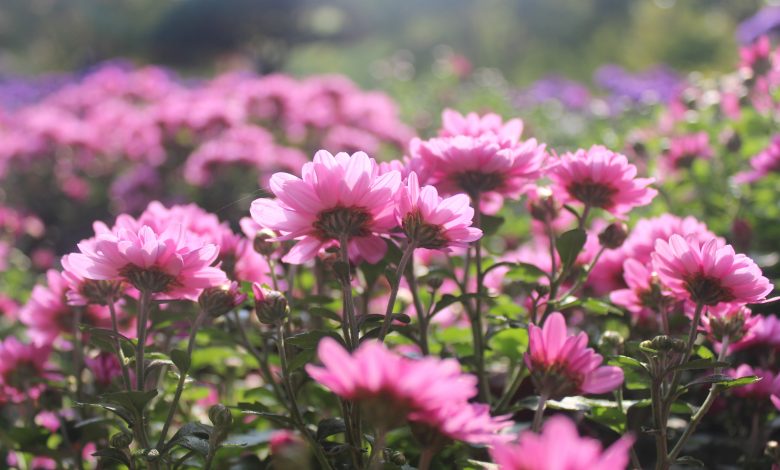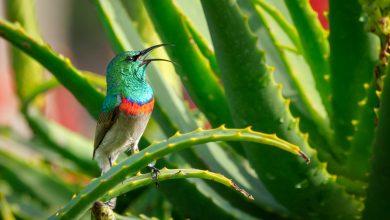Best Flowers for the Beginning Gardener

Gardening is as rewarding as it is challenging. It requires care, patience, and an eye for natural beauty to truly make the most of the area you have to work with.
Saying that, it doesn’t all have to be about specific scientific details to maximize what grows when and how it grows. Besides, when you’re just starting out, you don’t want to dive headfirst into a sea of detail and terminology you know nothing about.
Instead, you probably just want to have a few different pretty colors to spruce up the front or back of the house, and that’s fine!
In fact, it’s why this article exists in the first place, to guide you through some of the easiest garden flowers that beginners like you can grow.

Sunflowers
Sunflowers are one of the most recognizable flowers on the planet, and for good reason. It’s an impossibly tall plant, looks beautiful, and is yellow, meaning it instantly brightens up any garden it’s added to.
It’s also quite an affordable and accessible flower. So you can pick up the seeds without much hassle from any flower or gardening shop, or even some dollar or discount stores.
So how do you grow them? Well, firstly, you need to make sure that you have the room for them. Giant sunflowers can grow upwards of 16 feet in height, so keep that in mind if you want to plant them. Because of this, they often requires staking to help it stay upright.
The flower needs at least five hours of sunlight per day, so when deciding where to plant it, make sure it’s not in the shade.
Sunflowers grow well in nearly any soil and can deal with drought pretty well once it’s grown a little. Just make sure to water it regularly just before, during, and just after flowering.
In terms of spacing, for giant sunflowers, three feet apart is ideal, but you can go a bit further if you want.
You won’t need to use fertilizer with these so long as your soil isn’t awful, and too much nitrogen stops them blooming, so it’s best if you just plant your sunflowers as is.
Sunflowers are super bright and super yellow, so it makes for a great late-summer flower that can really bring some joy to your garden. Particularly, it works really well if you plant them in a line along a wall or fence.
Bird, bees, and butterflies are attracted to them, meaning you can use them to attract pollinators for your other plants. The seeds of the flower can also be dried out and used during winter for bird feeders. So not only does it brighten up your garden, but it also attracts beautiful creatures to it, helping you achieve that coveted sunny day, Garden of Eden effect.
The Native American’s also used the plant as a companion to vegetables, so why not follow suit and do that yourself? Specifically, corn, beans, and squash work well with these flowers.
The flower doesn’t just look good in your garden, though. You can plant a batch for cutting and use them to make some lovely indoor arrangements or give someone one as a gift.
These are just the “giant” type of sunflower. There is also the “dwarf” sunflower, which is significantly smaller, and a gorgeous flower in its own right. Then there’s the “double,” which is like a big ball of fluff, the “perennial,” which is the smallest of the family and similar to a daisy, and lastly, “specialty” sunflowers, which come in different colors and patterns.

Morning Glories
From bright yellow to deep oceanic blue, morning glories are an old-fashioned flower that are the staple of many a cottage garden, and there’s a reason for that.
The flower itself is a gorgeous shade of blue that, when contrasted with other colors, really elevates your garden to the next level.
Beware, though; this is one of the harder flowers to grow on the list. Having said that, it’s still beginner-friendly. It is just a very aggressive grower, so it can get out of hand if you don’t take the time to maintain it.
As for how to grow them, in colder climates (areas that get below 45 degrees Fahrenheit), it’s an annual flower, but can still reseed and come back on their own. In warmer areas, it’s perennial.
It has a spread that can grow over 12 feet, so be sure to keep the space for them and make sure it doesn’t overrun your garden. Give them a big, spacious plot to make the most of them.
Morning glories need full sun exposure for at least six hours per day, but eight hours is ideal if you can get it. The flower starts to bloom in June and stops in October.
The flowers self-seed, so you need to be keeping an eye on them and cutting back spent blooms. If you don’t, your garden is going to begin to look like an ocean mighty quick.
Morning glories grow best in well-drained, moist soil and don’t need fertilizer to grow. Although, if you want to help it along, you can apply a balanced liquid fertilizer to your plot.
You can use the flower to decorate ugly stone walls or any other vertical area you want, due to the flowers tendency to expand rapidly. This includes fences, arches, and any other structures that you have dotted around your garden.
You can plant them in a container that is supported by a trellis and watch as the morning glories just cover the whole thing, creating an unbelievably pretty wall of light blue.
Alternatively, you can drape the flower out of a hanging basket. Not only does it look lovely to see them hanging off the side, but the flower can also twine its way up the hanger.
The shade of blue that the flower grows in allows for some great color contrasting in your garden, but it also comes in red, white, or pink. So if blue isn’t your color, you have options!
We’ve talked a lot about the morning glory’s ability to just overrun wherever it’s been planted, but it’s impossible to overstate just how important this is. Not only do you run the risk of destroying your own garden, but you could end up in some serious trouble with your neighbors or even the state. So if you do decide to grow these beauties, please, for your own sake, keep on top of them.

Marigolds
We are now going from the more difficult to maintain morning glories, to a fuss-free flower in marigolds.
These flowers are stunning. They have a deep, rich, orange (almost golden) color that is reminiscent of the sunlight during sunset, so they can add some seriously beautiful tranquility to your garden.
The seeds germinate quickly, and the flowers bloom fast as well, so you get a lot of satisfaction for minimum effort. Due to this, marigolds are a great first choice if you’re just starting out with gardening, or if you’re unsure and just want to dip your toes in the water.
Marigolds are an annual flower. It requires around eight hours of full sunlight, so make sure you plant them in a good spot.
The flowers come in a variety of different types, each varying in height. You can get ones as little as six inches tall or seeds that grow upwards of four feet. The different types also differ in color, either being that rich, golden sunlight that was described earlier or a more joyful yellow shade.
It blooms in the late spring and lasts up until the fall, as usual.
The seeds germinate quickly, generally in a few days. Then, once in the ground, the flower takes around eight weeks, or two months, to bloom. This makes them one of the faster-growing flowers on this list and a great choice as a first foray into the world of flower gardening.
Marigolds need to be planted in well-drained soil. If you plant them in clay soil, for example, the flower can’t bloom to its full potential.
When watering, make sure you do so at the base of the plant; otherwise, you risk rotting the flowerheads from too much moisture. Also, make sure you’re watering it regularly in high temperatures or dry weather, being sure to let the soil somewhat dry between sessions.
Fertilizer isn’t necessary for these flowers, but you can use some if you want. Different types of fertilizer have different effects on the plant, like boosting foliage at the expense of flower production, so make sure you’re using the correct type for your desired effect.
The flower naturally has a high tolerance for heat, so you can use them to line the side of walkways and paths you have in your gardens without much worry.
Of course, you can grow them in beds as well. The color is visually stunning and, combined with the right combinations, can make for some truly atmospheric gardens.
Where growing marigolds really shines, though, is in the flowers affinity for being used in a bouquet. So you’re going to want to plant a batch of them for cutting. When you do cut the flowers, remove the lower stems and leaves, and put them into a vase of water. They last about a week, so they can make for a stunning gift if you time it right.
On top of that, marigolds are also a natural repellent for mosquitoes. Plant them in containers on your patio, decking, or any other seating areas around the garden to keep the pests away.
The flower doesn’t just repel mosquitos, though. It also deters whiteflies, tomato hornworms, and cabbage worms. This makes them a great addition to a vegetable garden, as well as a flower garden. As well as insects, marigolds give off a scent that shoos away rabbits and deer, if that’s a problem you have.

Impatiens
Impatiens, also known as Busy Lizzies, are many people’s go-to flowers for their gardens. They come in a large range of colors and bloom very strongly.
The flowers that you get today are actually hybrids that have been specifically bred. This is because the pure plants tend to suffer from downy mildew and led to disease. Thankfully, you don’t need to worry about that today.
The plant is easy to grow, has great blooms, and looks gorgeous, making them one of the world’s most popular garden bed flowers.
Busy Lizzies don’t like cold temperatures at all, so before you plant them in the ground, make sure that the soil has warmed up after the last frost.
When the soil is ready, make sure it is well-drained. Then, apply a slow-releasing granular fertilizer to the soil and transplant. Make sure that the spot you pick has some light shade; impatiens don’t like direct sunlight, so keep them to the side.
How far you space out the seeds actually has an impact on how tall the final flower ends up. The closer you plant them together, the taller the plant is. Whereas if you space them out, it travels along the ground to fill in the gap.
Impatiens don’t do well during drought, so make sure you water them regularly. Mix organic matter and mulch in with the soil to help the plant retain moisture and prevent wilting.
You can use these flowers as good fillers for garden beds. They give you a lot of continuous color, so use them in tandem with other solid colors to create some beautiful contrasting effects.
It also works well if you plant them in hanging baskets or along pots on your windowsills. You can also get the flower in lighter pastel shades if the strong colors are overwhelming on your eyes.
They grow fast and bloom like there’s no tomorrow, so use them wherever you want a continuous line of color. Even line your driveway with them if you’re feeling adventurous.

Lavender
Lavender is very much a love it or hate it flower, but whichever camp you fall under, you can’t deny just how useful it is.
It can be used as an aromatic herb in some more adventurous dishes, has a great smell that you can use tactfully to get your clothes smelling great, or serves as a gorgeous looking garden filler. It has many uses, so if you decide to plant them, you are getting a lot of bang for your buck.
Lavender loves dry soil and high temperatures and grows to around three feet in height. It comes in a variety of colors, not just the purple of its namesake. You can get them in blue, yellow, and even white, which allows you to pull off some seriously impressive-looking beds in your garden.
If you look after the plant properly, and with the right environment, lavender can last for years, so there’s no yearly cycle of redoing the whole process over again.
Once in the ground, the flower doesn’t need much maintenance. It doesn’t need to be pruned and requires minimal watering, so if you’re feeling lazy, no harm, no foul.
Two things you do need to keep in mind, though, are your soil pH level and water content. If you have an acidic patch of land, your lavender can’t grow, and if the soil has too much water, or if you overwater the plant, the lavender dies as well.
Due to the gorgeous smell it gives off, lavender makes a great flower to line your walkways with. Just be warned, not everyone likes the smell!
You can plant them as a part of your vegetable garden if it strikes your fancy. The plant has a double usage in a vegetable garden, as it repels nasty pests and critters. It doesn’t protect your veggies all on its own, but it helps.
If you do grow it for culinary purposes, don’t grow much. It’s a powerful herb, so you don’t want to use too much of it in your dishes.



